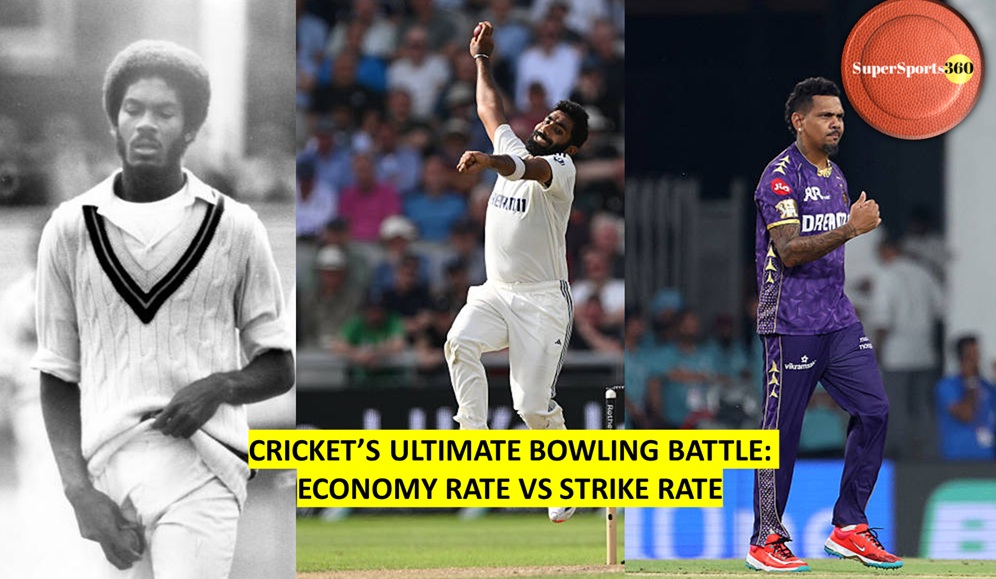Economy rate vs Strike rate in cricket – Explore the ultimate bowling showdown. Discover which metric matters most in T20s, ODIs, and Tests. Learn match‑winning strategies!
The Unsung Heroes of Cricket in the battle of Economy rate vs Strike rate
In the world of cricket, the spotlight almost always shines on batsmen — their centuries, strike rates, and game-winning sixes. But what often goes unnoticed is the silent dominance of bowlers who win matches through skill, discipline, and strategy. Despite their pivotal role, bowlers are usually judged harshly — either for not taking enough wickets or for conceding too many runs.
To truly understand a bowler’s effectiveness, we must look beyond raw wickets and focus on two essential performance metrics: Bowling Economy Rate and Bowling Strike Rate. Which one matters more? Does the format of the game—T20, ODI, or Test cricket—change the answer?
What is Bowling Economy Rate?
The Economy Rate is the average number of runs a bowler concedes per over.
Formula:
Economy Rate = Runs Conceded / Overs Bowled
- A lower economy rate is ideal.
- In T20 and ODI cricket, where every run counts, bowlers with low economy rates are critical for building pressure and halting scoring momentum.
- Think of them as run-saving machines — not always flashy, but vital to a team’s success.
What is Bowling Strike Rate?
The Strike Rate measures how many balls a bowler takes to dismiss a batsman.
Formula:
Strike Rate = Balls Bowled / Wickets Taken
- A lower strike rate means the bowler takes wickets more frequently.
- Crucial in Tests and critical phases of ODIs and T20s, where breaking partnerships can turn the tide of a match.
Economy Rate vs Strike Rate: What’s More Important?
The short answer: It depends on the format.
| Format | Priority | Why It Matters |
| T20 | Economy | Every run counts. Restricting runs creates pressure that leads to wickets. |
| ODI | Balanced | Teams need to both contain and strike based on game phases. |
| Test | Strike Rate | Taking 20 wickets wins you the match. Run containment is secondary. |
T20 Cricket: The Economy Game – Battle of Economy rate vs Strike rate
In the high-octane format of T20 cricket, saving runs is everything. Teams regularly post scores of 160–200 runs. A bowler with an economy of under 7 can be a match-winner even without taking wickets.
- Top examples: Rashid Khan, Sunil Narine
- Teams often use bowlers with high economy but good strike rates to target key batsmen like Chris Gayle, accepting the cost to get the breakthrough.
Insight: In T20s, it’s better to give away fewer runs than to take wickets at a high cost.
ODI Cricket: The Art of Balance – Battle of Economy rate vs Strike rate
The 50-over format demands versatility. Bowlers must adjust their roles across different phases of the match — from attacking early with the new ball to defending in the death overs.
- Early overs: Strike Rate matters
- Middle overs: Economy becomes crucial
- Death overs: Both metrics are vital
Example: Jasprit Bumrah — a master of mixing economical spells with wicket-taking bursts.
Test Cricket: Strike to Win- Battle of Economy rate vs Strike rate
In Test matches, containment means little without breakthroughs. The goal is to dismiss 20 batsmen, making the strike rate the most critical metric.
- A bowler can go for 4+ runs an over but still be a match-winner with frequent wickets.
- Attacking bowlers like Pat Cummins and Kagiso Rabada are prized for their ability to strike repeatedly, even on flat pitches.
Building the Ideal Bowling Attack-Battle of Economy rate vs Strike rate
A successful bowling unit in any format typically includes:
- A strike bowler to take wickets
- A containment bowler to hold one end
- A death-over specialist (in ODIs and T20s)
- A mystery or variation bowler to break rhythm
Final Thoughts: What Wins You the Game?
Strike Rate wins matches. Economy Rate saves them.
Knowing when to use each is what makes a bowler — and a team — successful.
Quick Takeaways:
- T20: Economy > Strike Rate
- ODI: Strike Rate ≈ Economy
- Test: Strike Rate > Economy
In the battle of Economy rate vs Strike rate, A bowler’s role should be viewed in the context of format, match phase, and pitch conditions- all play a crucial part in evaluating performance.
Our website : supersports360.com
Trending Article:
MasterClass in Fielding Positions
Time to look beyond Bumrah in Test Cricket
Join us on Twitter (x) : @360supersports



Leave A Comment